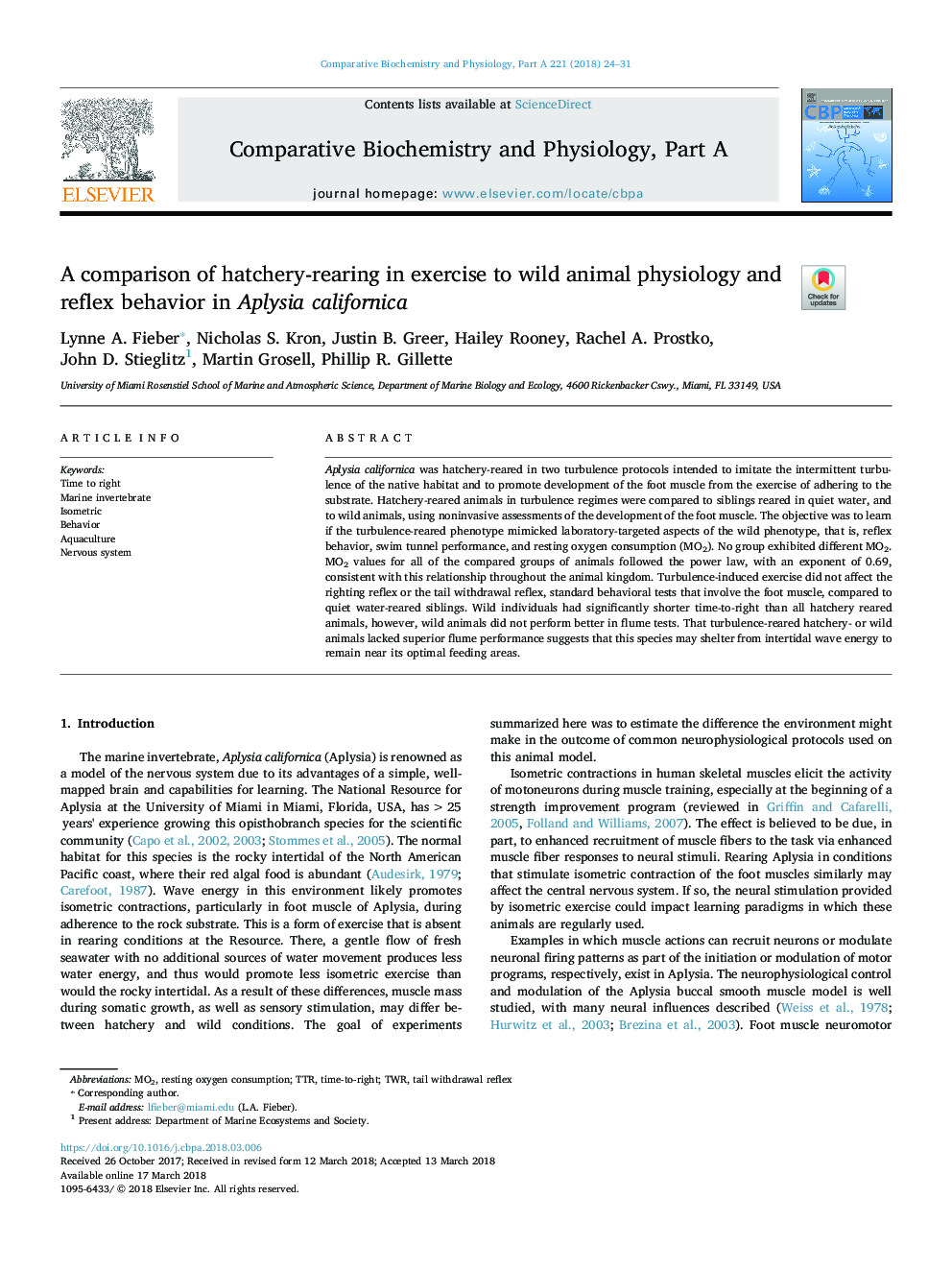| Article ID | Journal | Published Year | Pages | File Type |
|---|---|---|---|---|
| 8318166 | Comparative Biochemistry and Physiology Part A: Molecular & Integrative Physiology | 2018 | 8 Pages |
Abstract
Aplysia californica was hatchery-reared in two turbulence protocols intended to imitate the intermittent turbulence of the native habitat and to promote development of the foot muscle from the exercise of adhering to the substrate. Hatchery-reared animals in turbulence regimes were compared to siblings reared in quiet water, and to wild animals, using noninvasive assessments of the development of the foot muscle. The objective was to learn if the turbulence-reared phenotype mimicked laboratory-targeted aspects of the wild phenotype, that is, reflex behavior, swim tunnel performance, and resting oxygen consumption (MO2). No group exhibited different MO2. MO2 values for all of the compared groups of animals followed the power law, with an exponent of 0.69, consistent with this relationship throughout the animal kingdom. Turbulence-induced exercise did not affect the righting reflex or the tail withdrawal reflex, standard behavioral tests that involve the foot muscle, compared to quiet water-reared siblings. Wild individuals had significantly shorter time-to-right than all hatchery reared animals, however, wild animals did not perform better in flume tests. That turbulence-reared hatchery- or wild animals lacked superior flume performance suggests that this species may shelter from intertidal wave energy to remain near its optimal feeding areas.
Related Topics
Life Sciences
Biochemistry, Genetics and Molecular Biology
Biochemistry
Authors
Lynne A. Fieber, Nicholas S. Kron, Justin B. Greer, Hailey Rooney, Rachel A. Prostko, John D. Stieglitz, Martin Grosell, Phillip R. Gillette,
